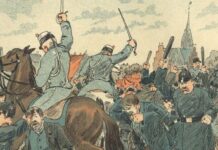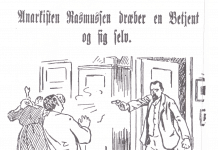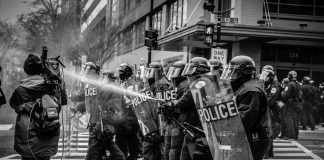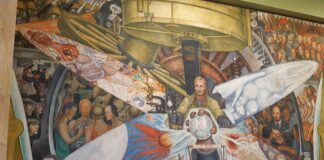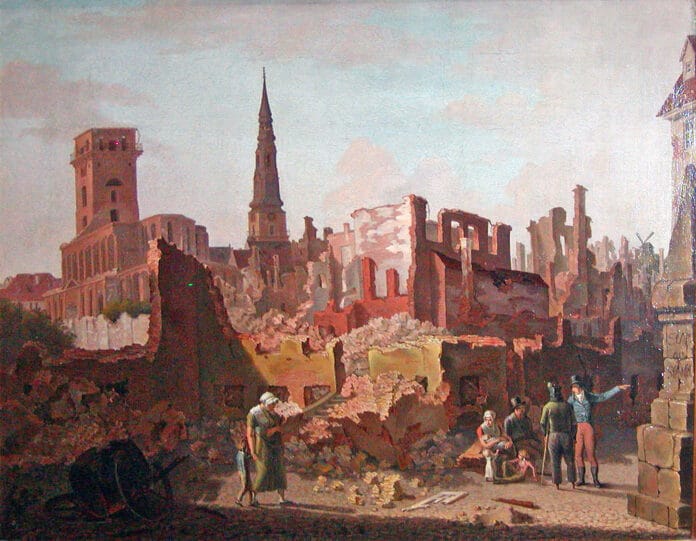
Socialistisk Biblioteks Tidslinje med links til begivenheder og personer i 1807.
Se også Index over personer, organisationer/partier og værker (som bøger, malerier, mm.), steder, begivenheder, mv., der er omtalt på hele Tidslinjen, titler og indhold på emnelisterne osv.
25. marts 1807
Det engelske parlament vedtager forbud mod slavehandel (først i 1833 forbydes slaveriet i hele det britiske imperie).
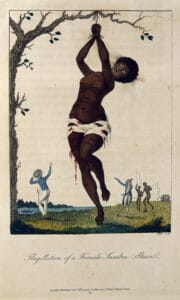
Links:
- Slave Trade Act 1807 (Wikipedia.org)
- Slaveri (Leksikon.org)
- Slaveri (Denstoredanske)
- Slavery Abolition Act 1833 (Wikipedia.org)
- Atlantic slave trade (Wikipedia.org)
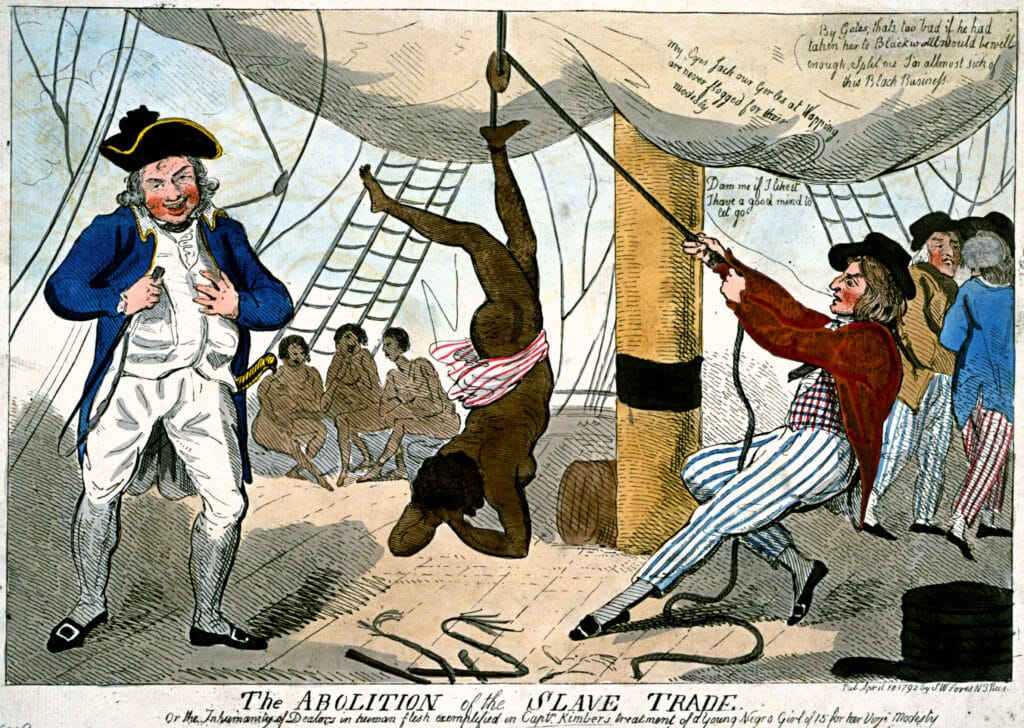
“The theory of racism was developed to justify the slave trade in the early days of capitalism. The brutality of slavery is depicted in this 18th century anti-slavery drawing.”
Slavery was crucial for the development of Capitalism (Jacobin, April 10, 2024). “Historian Robin Blackburn has completed a trilogy of books that provide a comprehensive Marxist account of slavery in the New World. He spoke to Jacobin about the intimate links between the slave systems in the Americas and the origins of capitalism.” See Alec Israeli’s book review: Slavery, capitalism, and the politics of abolition (Jacobin, May 19, 2024).
The uprisings that ended slavery (Socialist Review, Issue 459, July-August 2020). “We are told William Wilberforce brought about the abolition of slavery. As John Newsinger explains, it was the slaves themselves that fought bloody rebellions in order to win their freedom.”
The rise and fall of New World slavery (International Socialist Review, Issue 79, September-October 2011). Anthony Arnove interviews Robin Blackburn, author of many books about slavery.
The origins of racism (Socialist Worker, Issue 2259, 5 July 2011). “Racism is so embedded in our society that many people assume it has always existed. But, says Yuri Prasad, it is really a modern phenomenon that developed with capitalism.”
Paul Gilroy on commemorations of the end of the slave trade (Socialist Worker, Issue 2048, 24 April 2007). “Leading black intellectual Paul Gilroy spoke at a Socialist Worker meeting on ‘Who Really Ended the Slave Trade?’”
What really ended slavery? (International Socialism, Issue 115, Summer 2007). “Robin Blackburn, author of The Overthrow of Colonial Slavery 1776-1848, spoke to International Socialism on the bicentenary of the abolition of the transatlantic slave trade.”
A great British tradition (Socialist Review, Issue 314, May 2007). “Writer and anti-war activist John Newsinger recalls the events of the Great Indian Rebellion 150 years ago this month.”
On the dynamics of anti-slavery (Solidarity, 3/110, 19 April 2007). “Robin Blackburn, author of The overthrow of Colonial Slavery (Verso, 1988) talked to Martin Thomas.”
Fight slavery in all its forms (Weekly Worker, Issue 667, April 5, 2007). “Eddie Ford on the bicentenary of the abolition of slavery in Britain – and the distorted pictures painted of William Wilberforce.”
The end of the slave trade: Myth and reality (Socialism Today, Issue 108, April 2007) “Hannah Sell explains that mighty forces, especially slave uprisings, were behind the 1807 act.”
Abolition and working class solidarity (Weekly Worker, Issue 664, March 15, 2007). “Mike Macnair examines the class forces that underpinned anti-slavery.”
The revolt against slavery (Socialist Worker, Issue 2043, 24 March 2007). “Supplement featuring Adam Hochschild and Marika Sherwood, on the 200th anniversary of the abolition of the slave trade in the British Empire.” App. 15 links to articles etc.
Slavery at the heart of Britain’s wealth. By Susan Jappie (A World to Win, March 2007). Review of James Walvin, A Short History of Slavery (Penguin, 2007)
Slavery abolished! But 200 years later the struggle continues. By Jon Avis (In Defence of Marxism, 26 March 2007). “For the rising bourgeoisie, the slave trade played a pivotal role in the expansion of the global market and the creation of modern world capitalism.”
Slavery and the roots of racism (Workers Power, Issue 313, March 2007). “In this article Dave Stockton explains the roots of slavery and the racist ideology that was used to justify it.”

Se også:
Derfor eksisterer slaveriet i bedste velgående i dag. Af Svend Vestergaard (Modkraft.dk, 30. december 2016). Anmeldelse af Dick Harrison: Slaveriets historie (Informations Forlag, 2016, 438 sider)
What Marx understood about slavery. By Kevin B. Anderson (Jacobin, 5 September 2019). “Marx, like generations of socialists, saw the particularly capitalist character of the New World’s slavery — and the inextricable link between the emancipation of the enslaved and the liberation of the entire working class.”
Liberalism and racial slavery: A unique twin birth (Verso, Blog, 29 June 2018). Excerpt from Domenico Losurdo, Liberalism: A Counter-History (Verso, 2011, p.35-65): “Losurdo looks at the foundational link between liberalism and Atlantic slavery, and liberal philosophers’ shifting positions on slavery …” See also Domenico Losurdo: The tangled paradox of liberalism: Between liberty and slavery (International Socialist Review, Issue 84, June 2012). “In this brief presentation, I will try to explain the content of my book.”
The apocalypse of settler colonialism. By Gerald Horne (Monthly Review, Vol.69, No.11, April 2018). This article is adapted from Gerald Horne, The Apocalypse of Settler Colonialism: The Roots of Slavery, White Supremacy, and Capitalism in Seventeenth-Century North America and the Caribbean (Monthly Review Press, 2018, 256 p.). See also: Gerald Horne on People’s Republic, talks to Brian Griffith about the 1776 Counter-Revolution (Monthly Review Press, 2018) + critical review by John Woodford: Apocalypse of our times (Against the Current, Issue 198, January-February 2019).
Slavery and the origins of racism. By Lance Selfa (International Socialist Review, Issue 26, November–December 2002). “… the concepts of ‘race’ and ‘racism’ are modern inventions. They arose and became part of the dominant ideology of society in the context of the African slave trade at the dawn of capitalism in the 1500s and 1600s.” Also online at Internationasocialism.net (August 1, 2021).
The New International Slavery Museum (site)
Bookwatch: Fighting to unite Black and White. By Lee Sustar (International Socialism, Issue 71, Summer 1996, p.155-165).
Se også på Socialistisk Bibliotek:
Emneboxen: Slaveri / Slavery
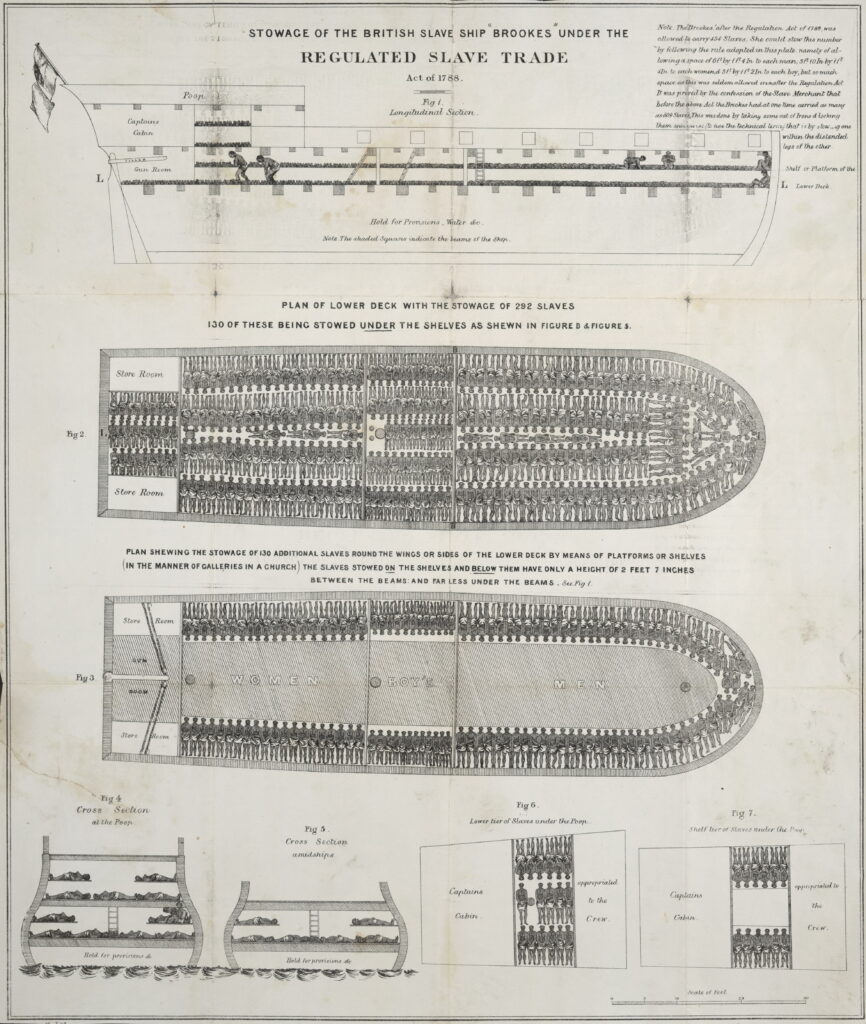
17. august 1807
Robert Fulton prøvesejler første dampskib “Clermont” fra New York til Albany.

Clermont illustration – Robert Fulton from Project Gutenberg eText 15161.jpg. Chapter XIII Robert Fulton “Consternation at the sight of Fulton’s monster.” “It was in the early autumn of the year 1807 that a knot of villagers was gathered on a high bluff just opposite Poughkeepsie, on the west bank of the Hudson, attracted by the appearance of a strange, dark-looking craft, which was slowly making its way up the river. Some imagined it to be a sea-monster… It had been supposed that Fulton’s object was to produce a steamer capable of navigating the Mississippi River, and much surprise was occasioned by the announcement that the “Clermont” was to be permanently employed upon the Hudson. She continued to ply regularly between New York and Albany until the close of navigation for that season, always carrying a full complement of passengers, and more or less freight. During the winter she was overhauled and enlarged, and her speed improved. In the spring of 1808 she resumed her regular trips, and since then steam navigation on the Hudson has not ceased for a single day, except during the closing of the river by ice.”
Se:
- Clermont (steamboat) (Wikipedia.org)
- Robert Fulton (Wikipedia.org)
2. september 1807
De belejrende britiske tropper starter kl. 19.15 (historiens første i Vesten!) terrorbombardement af civilbefolkningen, nemlig af København.
Efter tre nætters bombardement overgav Københavns kommandant Peyman byen, og englænderne tog den danske flåde. Danskernes drømme og tro på sig selv som europæisk stormagt var færdige.
Der blev affyret ca. 14.000 skud. Tabstallene for civile svinger mellem ca. 1600 døde (svarer til ca. 10.000 indbyggere i nutidens Kbh.) til 200 og helt ned til under 100 og dertil ca. 1000 sårede (af datidens ca. 86.000 indbyggere i byen).
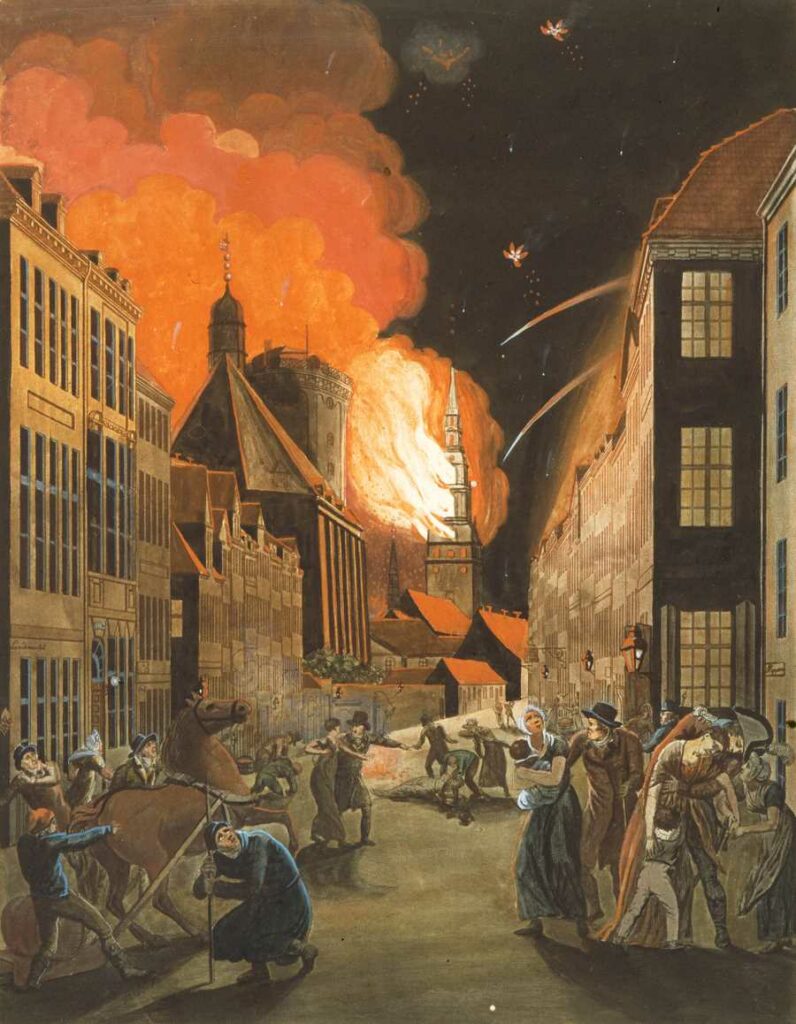
Links:
Københavns bombardement (Wikipedia.dk). Med eksterne henvisninger og links til bl.a. øjenvidneberetning og digte.
Københavns Bombardement (Denstoredanske.dk)
Bombardementet. Af Jes Fabricius Møller (Politiken.dk, 1. september 2007)
Københavns bombardement 1807 (Golden Days in Copenhagen; online på Internet Archive). Litteratur, links og arrangementsoversigter i 200-året.
Anden Englandskrig og Københavns bombardement (Tøjhusmuseet; Nationalmuseet) Med video om bombetyper.
Johann Peter Hebel: Københavns Bombardement. Af Jan E. Janssen (Selskabet for Københavns Historie). Samtidig øjenvidneskildring.
Nomos. Nationalistisk internet-medie, med dokumenter og illustration fra 1807. Søgeresultat for 1807 + bombardement
Militærhistorie: Københavns Bombardement 1807 (Natmus.dk). Optakten – Bombardementet – Flådens ran – Kapere og kanonbåde – Links.
Litteratur:
1807: en bibliografi (pdf). Af Louise Kjersgaard og Carsten Meyer (Københavns Kommunes Biblioteker, 2007; online på DocPlayer). Fortegnelse over trykt materiale, faglitteratur og en del skønlitteratur, 1807-2007.
Det nye våben Congreves raket (brandraketer) blev anvendt. Men omdiskuteret i hvilket omfang.
Se:
Congreverakett (Wikipedia.no)
NB
General von Schmettau overbragte den rasende kronprins Frederik (senere den 6.) – der slet ikke var i Kbh., men i Kiel – budskabet om Kbh.s fald.
Se også:
Københavns Bombardement (Kulturcentret Assistens). Med video, ca. 5 min.
Litteratur:
I kamp mod dumhed og hykleri: om oplysningsmanden general W.H. von Schmettau (1719-85). Af Jens Glebe-Møller (Museum Tusculanum Press, 2011, 122 s.)
















